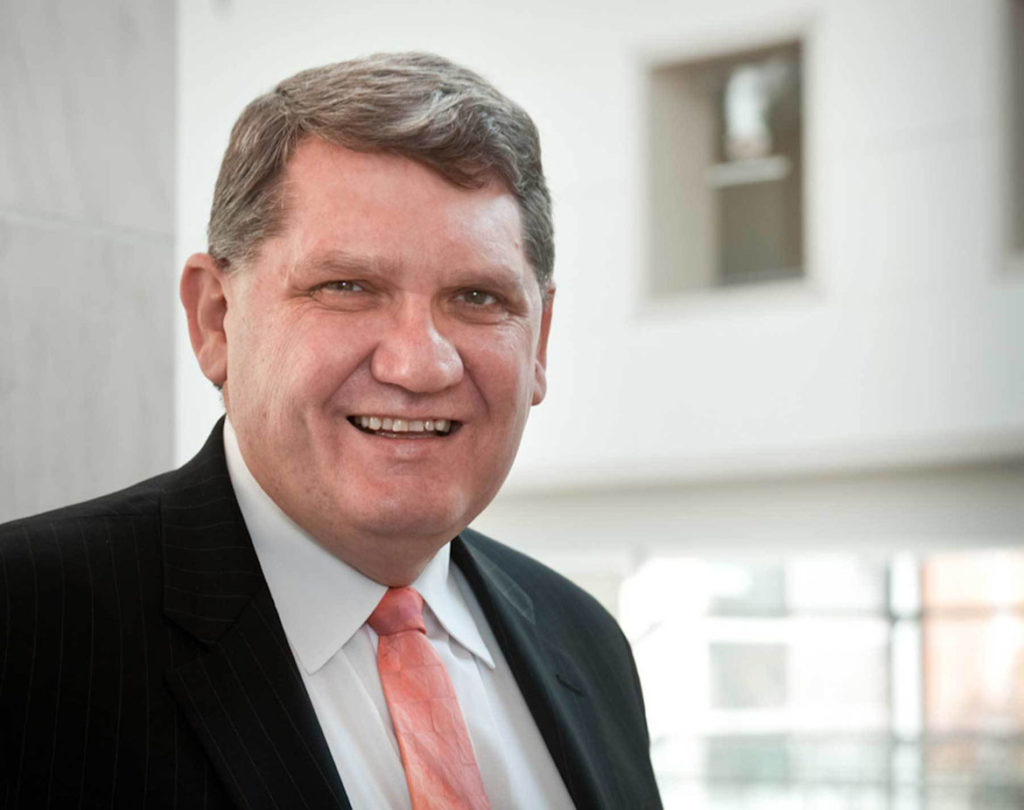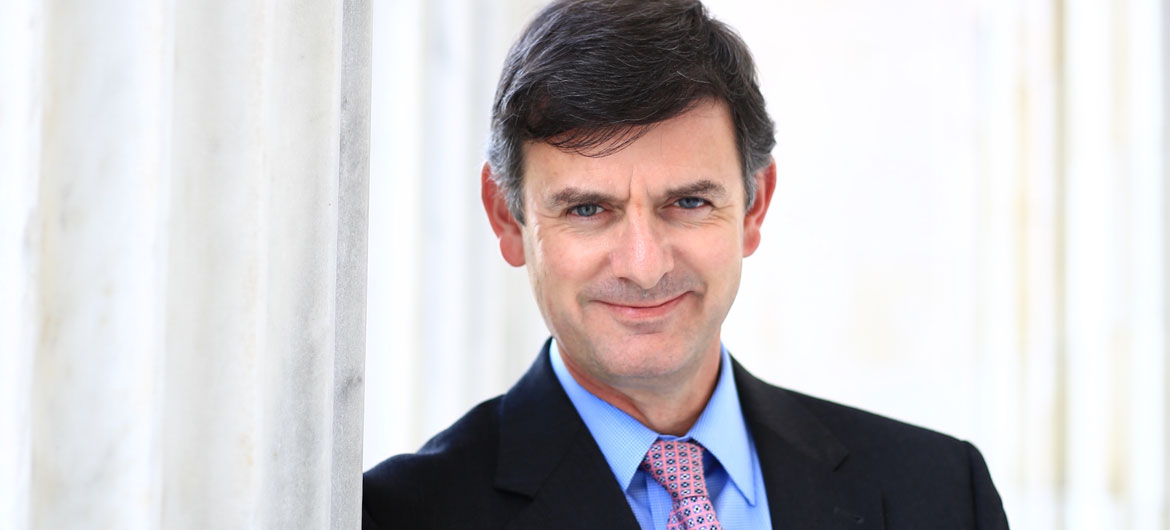Brian Kennedy (pictured above)—director, president and CEO of the Toledo Museum of Art in Ohio since September 2010—has been named the next director of Salem’s Peabody Essex Museum. The 57-year-old is expected to begin work here on July 15, taking over from Dan Monroe, who has led the Salem institution since 1993 and very much transformed and energized the place.
“Museums help us to make meaning of ourselves, our lives, our community, and the wider world by giving us time and space to experience wonder, think, feel, reflect, and create,” Kennedy said in a press release. “I look forward to ensuring PEM continues to be a vital resource, a hub of innovation, and a force of good in the world for years to come.”
Kennedy told the Toledo Blade that his was also moved to come here because his daughter, son-in-law, and new grandson live within an hour of the Peabody Essex.
The Toledo Museum of Art is a museum in the vein of Boston’s Museum of Fine Arts, with an encyclopedic collection with a Western focus. Under Kennedy the museum began “collecting for the first time works of indigenous arts of Native America, Aboriginal Australia and Oceania,” the museum reported.
“We want to introduce the audience to other artists of the world,” Kennedy said in 2012. “We don’t have a Navajo blanket. We don’t have Indonesian textiles. Those are major art forms of two groups not represented.”
During Kennedy’s tenure, the Toledo museum featured exhibitions of Manet and Frans Hals, Japanese prints, Frank Stella, Jules Olitski, contemporary and historic Native American art, contemporary aboriginal art from Australia, and Midwestern history. The museum also made visual literacy education for the digital age a focus.
In 2012, the Toledo museum refurbished 6,000 square feet of gallery space. Some 14,000 square feet of new and refurbished gallery space opened to the public in 2018 in “the largest renovation project to take place at TMA since the 1980s,” the museum reported. They also added a solar canopy to the museum parking lot to collect energy, continuing a commitment to solar power that had started at the museum before he arrived.
The Toledo museum auctioned off of more than 60 pieces of ancient Roman or Egyptian artifacts in 2016, which “brought objections from the Egyptian and Cyprus governments, who said cultural artifacts should remain accessible to the public” and prompted the Egyptian government to try to “impose sanctions against the Toledo museum,” the Toledo Blade reported in 2017. That year the museum worked to sell an additional 145 pieces. The sales aimed to raise more than $1 million for the museum’s new acquisitions fund.
Born in Dublin, Kennedy studied art history and history at University College there, earning bachelor’s, master’s and doctoral degrees. He was assistant director of the National Gallery of Ireland in Dublin from 1989 to 1997, then director of the National Gallery of Australia in Canberra from 1997 to 2004, and was director of Dartmouth College’s Hood Museum of Art in Hanover, New Hampshire, from 2005 to 2010. He has written six books, most recently on the artists Sean Scully and Frank Stella.
If this is the kind of coverage of arts, cultures and activisms you appreciate, please support Wonderland by contributing to Wonderland on Patreon. And sign up for our free, weekly newsletter so that you don’t miss any of our reporting.

Last October, Dan Monroe, the Peabody Essex Museum’s executive director and CEO for the past 25 years, announced plans to retire. Monroe spearheaded the 2003 Moshe Safdie-designed glass and brick expansion, centered on a soaring atrium. Under his leadership, the museum installed the 200-year-old Chinese Yin Yu Tang house, billed as the only such example of Chinese domestic architecture on display in the United States. A new 40,000-square-foot wing set to open to the public later this year and undertake a complete reinstallation of its galleries as part of the museum’s $650 million Connect Campaign. As of last fall, more than $600 million had been raised, the museum reported.
During Monroe’s years at the top of the museum, its operating budget grew from $3.4 million to $30 million, its endowment from $23 million to more than $400 million, and direct attendance from 80,000 to more than 250,000, the museum reports. The Connect Campaign aims to build an endowment for the institution capable of providing 60 to 65 percent of operating support for an annual budget of more than $34 million—“more than twice the amount of endowment income than the average art museum draws annually,” the museum says. The Wall Street Journal has described it as “retooling the traditional business model for museums.”
In 1992, the year before Monroe took charge, Peabody Museum of Salem merged with the Essex Institute, absorbing the institute’s Phillips Library, and becoming the Peabody Essex Museum. The museum’s stewardship of the library has been controversial. It filled two historic buildings on Salem’s Essex Street until 2013 and then in temporary space in Peabody until September 2017. Last summer it moved to collection center to Route 1 in Rowley, three quarters of the building devoted to museum collection preservation and storage, the rest hosting the library. The move upset locals who felt the library’s historical resources—including documents from the Salem Witch Trials of 1692—should stay in Salem. (Monroe has been loath to have the museum have anything to do with Salem’s witch history—or present.)
Most amazingly, under Monroe, the museum has transformed from a colonial treasure house rooted in its 1799 founding as a “cabinet of natural and artificial curiosities” of the East India Marine Society, an organization of Salem captains and supercargoes who had sailed beyond either the Cape of Good Hope or Cape Horn. The museum has been able to turn its collection into the foundation of a multicultural institution, engaged with history as well as, for example, living Native American artists and creators from around the world.
A major hire was Lynda Roscoe Hartigan, brought in the museum’s chief curator in 2003 from the Smithsonian American Art Museum in Washington, D.C., where she had been chief curator. She was named the Salem museum’s deputy director in 2016.
This lead to a series of marvelous modern and contemporary art exhibitions, the like of which had never before been seen on Boston’s North Shore—including Joseph Cornell in 2007, 20th century surrealists Man Ray and Lee Miller in 2011, a major 2012 survey of contemporary Native American art, Alexander Calder sculptures in 2014, Dutch tinkerer Theo Jansen’s amazing “Strandbeest” contraptions in 2015, Rodin sculptures in 2016, and Sally Mann photos last summer. These were augmented by dazzling shows of traditional Chinese art, Dutch old master paintings, contemporary fashion, modern art from India, and ancient Maya art. All of which have made the Peabody Essex the most consistently intriguing museum in New England.
If this is the kind of coverage of arts, cultures and activisms you appreciate, please support Wonderland by contributing to Wonderland on Patreon. And sign up for our free, weekly newsletter so that you don’t miss any of our reporting.
